Prospects for replacing base patrol and reconnaissance aircraft with drones in Chinese naval aviation
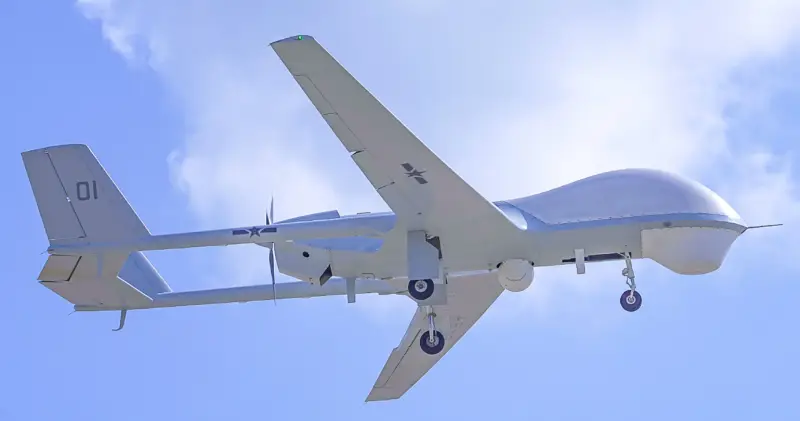
The PLA Navy's aviation fleet has approximately four dozen specialized aircraft suitable for patrolling and long-range reconnaissance at great distances from the coast.
Considering the area of sea waters that the rapidly growing Chinese fleet seeks to control, the available number of patrol and reconnaissance aircraft is clearly insufficient. In this regard, Chinese admirals are forced to use N-6 missile-carrying bombers (a copy of the Tu-16) for long-distance flights, which is irrational from the point of view of operating costs and saving the life of expensive heavy attack jet vehicles.
In recent years, the Chinese maritime aviation there is a trend towards partial replacement of base patrol aircraft drones middle and heavy class. The UAVs are tasked not only with conducting patrols and reconnaissance, but also with issuing target designations to anti-ship systems with cruise and ballistic missiles.
Foreign experts believe that in the future, a significant number of UAVs equipped with powerful airborne radars, which will be able to view not only the sea surface, but also control the air situation, should be expected to appear in the PLA Navy aviation. The problem of transmitting intelligence data and navigation is already being solved with the help of a satellite constellation deployed by China.
Medium strike and reconnaissance UAV Wing Loong
According to Western experts, Chinese naval aviation operates at least three dozen Wing Loong UAVs. This device, produced by the Aviation Industry Corporation of China (AVIC), is offered to foreign buyers under the designation Pterodactyl I.
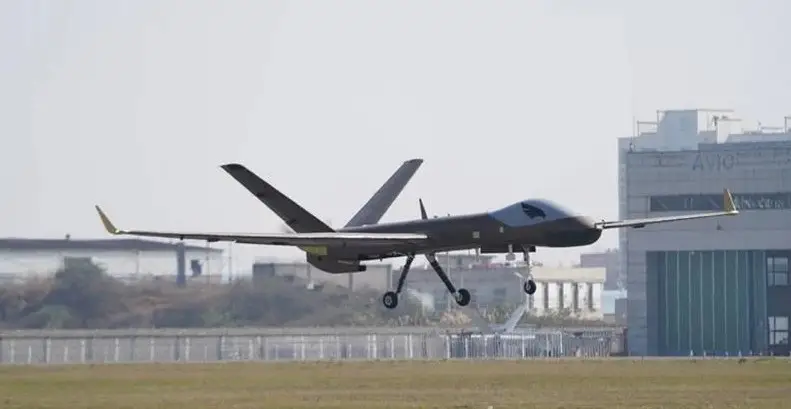
Foreign sources say that the Pterodactyl is largely copied from the American MQ-1 Predator. At the same time, AVIC representatives claim that the drone is a completely independent development.
The Wing Loong UAV first flew in 2007. Adoption took place in 2012. In addition to the PRC armed forces, which purchased at least 60 drones of this type, approximately 100 more of these unmanned vehicles at a price of about $1 million were sold to Saudi Arabia, Egypt, the United Arab Emirates, Indonesia, Uzbekistan, Nigeria, Serbia and Kazakhstan. Drones owned by Saudi Arabia and the UAE have been involved in combat operations in Yemen and Libya.
The Wing Loong UAV is designed according to the mid-plane design with high aspect ratio wings. The tail is a single V-shaped stabilizer pointing upward from the fuselage (unlike the MQ-1 Predator, which has it pointing downward). The engine is located at the rear of the fuselage. It drives a three-bladed pusher propeller with variable blade pitch. In the forward part of the fuselage, under the bottom, there is a spherical block of optical-electronic equipment designed for round-the-clock monitoring of the situation in a given area, searching for targets and issuing target designation.
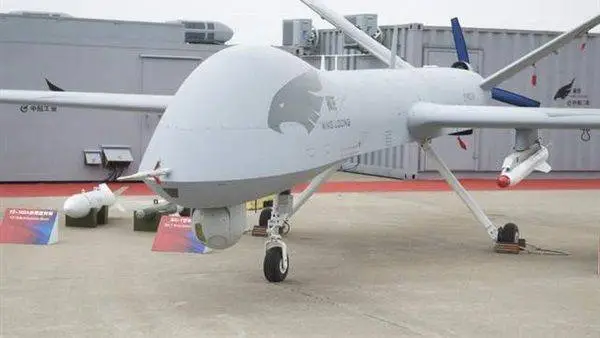
The first modification of the drone with a take-off weight of 1100 kg was equipped with a 100 hp piston engine. and was capable of carrying a payload weighing up to 200 kg. Wingspan - 14 m, length - 9,05 m. Maximum speed - 280 km/h, patrol speed 150-180 km/h. Practical ceiling – 5000 meters. The Pterodactyl payload may include various guided aircraft munitions weighing up to 120 kg, reconnaissance equipment or equipment designed to relay high-frequency radio signals.
An improved Wing Loong II UAV was demonstrated at Airshow China 2016.
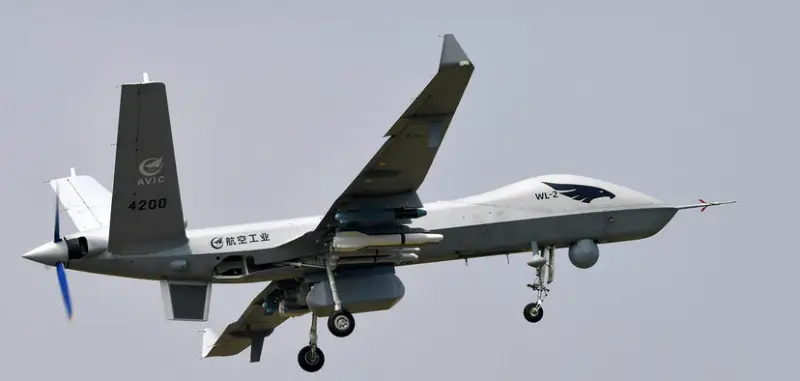
This modification differs from previous versions by its take-off weight increased to 4200 kg, larger dimensions and a turboprop engine. The wing span increased by almost one and a half times (up to 20,5 m), and the take-off weight increased by 3,5 times. The UAV is capable of flying at a speed of 370 km/h. The ceiling is 11 m. Flight duration is up to 000 hours.
According to information announced during the air show, the new drone has an optimized aerodynamic configuration, an improved airframe design and modified on-board systems, as well as a more powerful turboprop engine. In addition to improving flight performance, Wing Loong II received an expanded set of optoelectronic and radio systems and is capable of carrying an increased payload. The mass of weapons placed on six underwing hardpoints has increased to 480 kg, and guided bombs and compact laser-guided anti-ship missiles have been added to the ammunition load.
The control of the Wing Loong II UAV is combined - the signal can be broadcast from a ground or ship station or via satellite channels.

Mobile UAV control post and space communication mobile stations
In the first case, if a special repeater is not used, the range of information exchange at high flight altitude is approximately 150 km; when transmitting a signal via a communications satellite, the range reaches 2500 km.
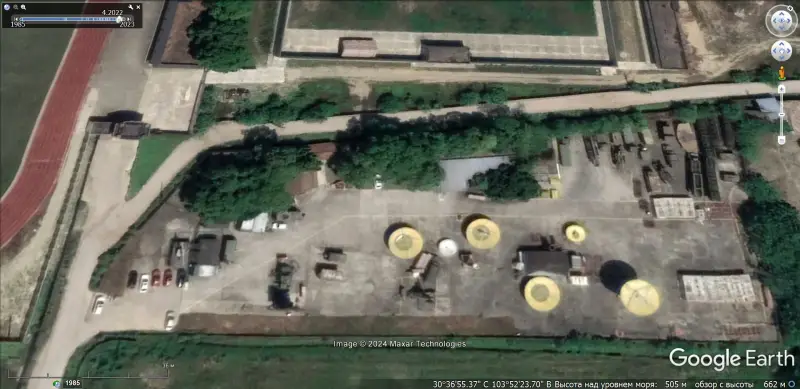
Google Earth satellite image: satellite communication station in the vicinity of Chengdu
In 2018, the deployment of mobile space communications systems was noticed in the southern and southwestern regions of China. According to foreign observers, this is due to the massive supply of long-range drones to the troops.
It is not known for certain which drones are in service with the Chinese naval aviation, Wing Loong or Wing Loong II. Perhaps earlier and more advanced new modifications are used in parallel.
Medium strike and reconnaissance UAV BZK-005 Giant Eagle
The PLA Navy is armed with up to three dozen BZK-005 Giant Eagle medium reconnaissance drones. This UAV was developed by specialists from Beijing Aerospace University and is manufactured by Harbin Aircraft Industry Corporation at a facility in Taizhou, Zhejiang Province.
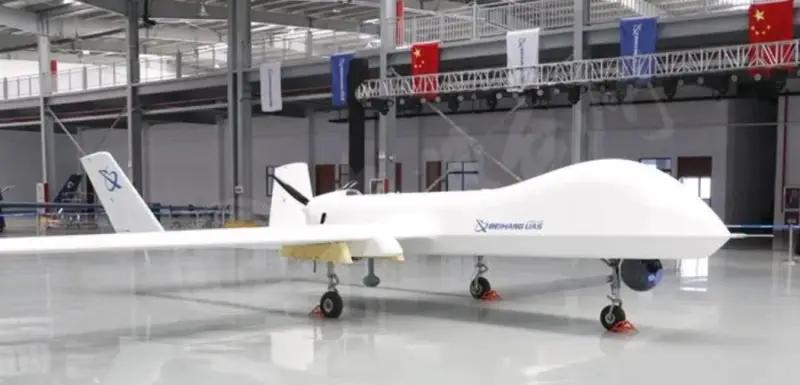
The drone was tested from 2011 to 2013 at the Daishan Naval Air Base.
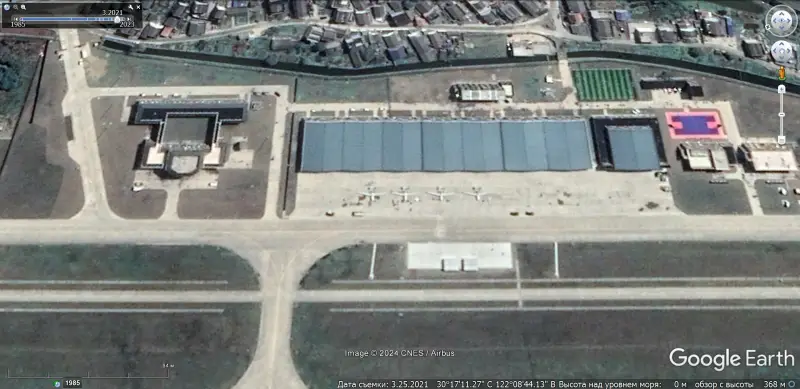
Google Earth satellite image: BZK-005 Giant Eagle UAV at Daishan Air Base
The Giant Eagle drone is made of aluminum-magnesium alloys, glass and carbon fiber. The long flight duration is ensured by an economical piston engine that drives a three-blade propeller.
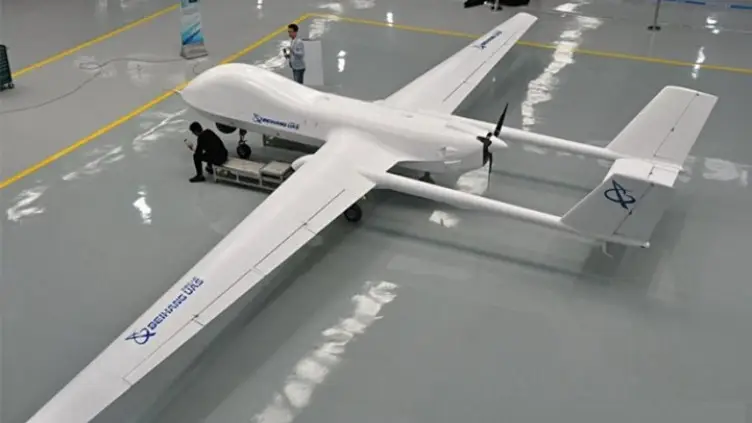
With a wingspan of 18 m, the device weighs just over 1500 kg. Flight duration is up to 40 hours. Cruising speed: 130-180 km/h. Maximum speed: 210 km/h. The payload mass on four suspension units is 370 kg. Laser-guided missiles can be used to destroy small targets.
The optoelectronic reconnaissance and guidance system makes it possible to detect a target of the “high-speed small-sized boat” type at a range of up to 50 km and track it until the missile hits it. Equipment for electronic reconnaissance or for intercepting information transmitted via radio and satellite communication channels can be suspended at external suspension points.
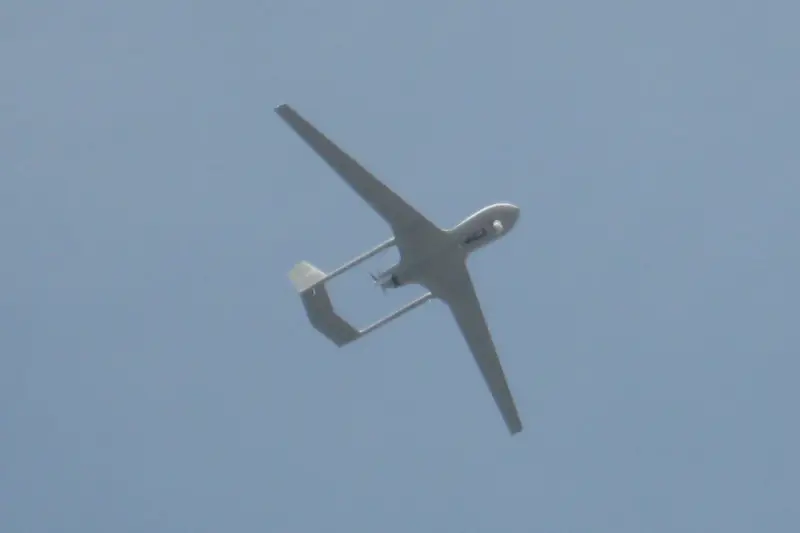
When flying in the range of enemy electronic warfare equipment, the BZK-005 operates in fully automatic mode. The computer complex, based on available data, plans a flight route, enters the interference zone, analyzes the interference, and when a source of interference is detected, strikes with destructive weapons. The autonomous control system allows this device to autonomously fly to the patrol zone, independently detect and classify a target, carry out guidance and fire, and also evaluate the results of the use of aircraft weapons.
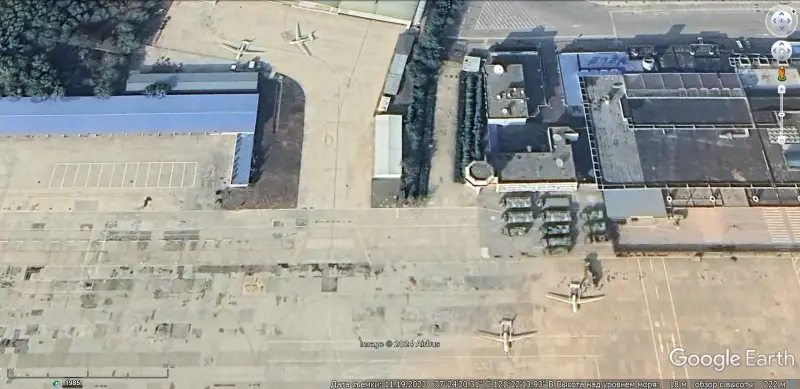
Google Earth satellite image: BZK-005 Giant Eagle UAV at Yantai-Laishan Air Base
Based on publicly available satellite images, in addition to Daishan Air Base, BZK-005 UAVs are also based at Yantai-Laishan and Yinchuan Air Bases.
High-altitude reconnaissance UAV WZ-7 Soaring Dragon
In 2006, a model and drawings of a closed-wing UAV were presented at the Zhuhai Air Show. Usually the Chinese do not advertise their plans until they achieve results, and foreign experts, taking into account the exotic nature of the aerodynamic design, considered this to be misinformation.
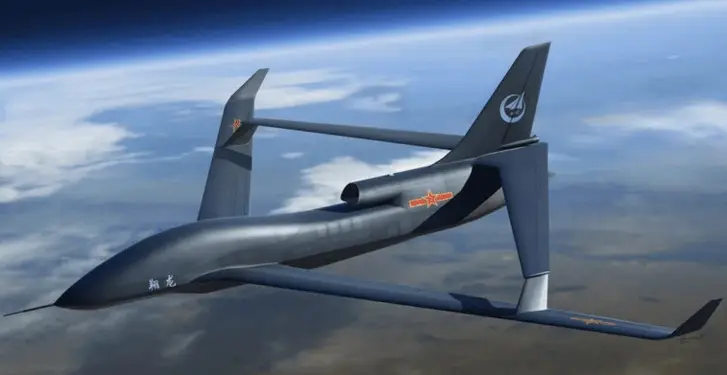
However, in 2009, it became known about flight tests of the WZ-7 Soaring Dragon UAV (previously known as HQ-4 Xianglong), developed by the Chinese Aviation Industrial Corporation Chengdu Aircraft Industry Corporation (CAIC).
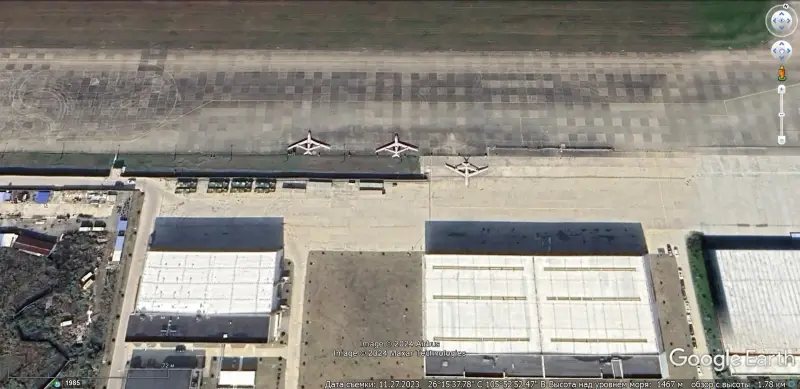
Google Earth satellite image: WZ-7 Soaring Dragon UAV at the Anshun factory airfield
The unmanned vehicle has a long lower wing with a root at the nose and a forward-swept upper wing with a root at the tail and downward-curved flaps. The upper wing is connected to the middle of the lower wing consoles. This circuit gives the least inductive resistance, since practically no end vortex flows are formed. A closed wing provides greater lift, and vehicles with such a wing are capable of flying at transonic speeds without the use of flaps.
The prototype flew with a WP-7 turbojet engine (a copy of the Soviet R-11F-300) from a J-7 fighter (a copy of the MiG-21). The first production vehicles were equipped with the WS-13 turbofan engine (a copy of the RD-93), which is also used on the light Chinese-Pakistani fighter JF-17 Thunder. There is information that the “Soaring Dragons” currently being produced have received a new lightweight and economical turbofan engine, optimized for flights at high altitudes, but what kind of engine it is is not specifically known.
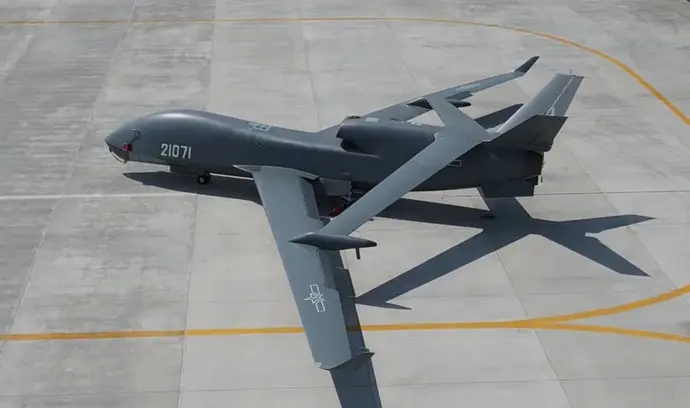
The UAV with a take-off weight of 7500 kg has a wingspan of 25 m and a length of 14,3 m. The maximum flight altitude is more than 18 m. The speed at high altitude is 000 km/h. A payload weighing 750 kg may include: optoelectronic reconnaissance and surveillance systems, a radar for viewing the sea surface, and electronic reconnaissance equipment.
The flight takes place automatically using the Chinese Beidou satellite navigation system. Control of the drone's actions and transmission of the received intelligence information is carried out via satellite communication channels or via a high-frequency broadband channel directly to a ground or ship point. In the latter case, other unmanned vehicles can be used to relay the radio signal.
Military experts agree that the Soaring Dragon in peacetime is mainly intended to control the surface of the ocean, and in the event of an armed conflict it should ensure timely detection and determination of the coordinates of enemy ships for striking them with anti-ship missiles.
In the foreign press, the Chinese WZ-7 Soaring Dragon is often compared to the American heavy UAV RQ-4 Global Hawk and its naval modification MQ-4C Triton, but it is worth noting that these are drones of different classes. The Chinese device has a range of up to 3500 km, while the Global Hawk can operate at a distance of up to 4400 km, and the Triton used by the US Navy can operate at a distance of up to 7500 km. At the same time, long-range American unmanned reconnaissance aircraft are significantly heavier and equipped with a wider range of reconnaissance equipment.
At the same time, experts agree that the WZ-7 UAV is potentially quite an effective means of patrolling the sea surface. This drone can also be used as a high-altitude photo reconnaissance aircraft when flying over land.
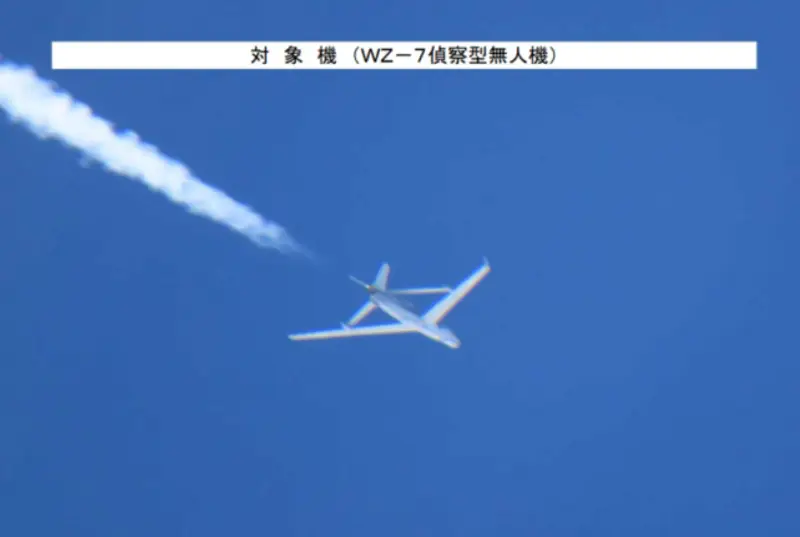
The WZ-7 Soaring Dragon entered service in June 2018. According to Chinese sources, 11 air bases have been prepared for the operation of long-range Soaring Dragon UAVs, mainly on the eastern coast of China. There are currently more than 20 drones of this type in operation.
Chinese heavy, closed-wing drones have also been spotted at Lingshui Air Base on Hainan Island and Woody Island in the South China Sea.
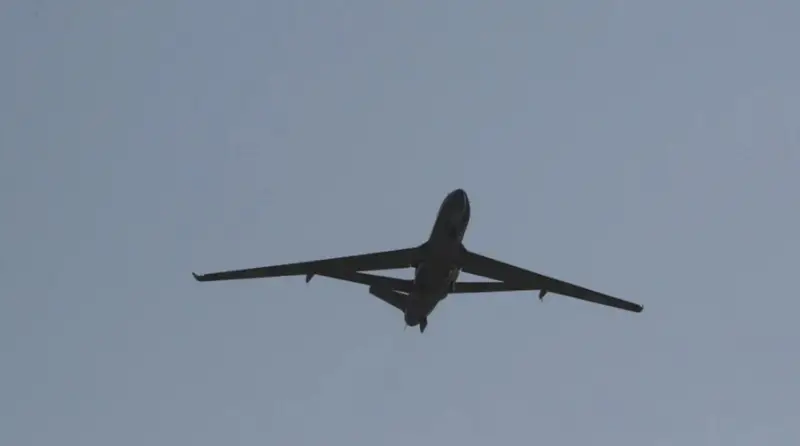
At the end of June 2019, Taiwanese media reported that the WZ-7 Soaring Dragon UAV was used to track the American Ticonderoga-class guided missile cruiser USS Antietam (CG-54) as it passed through the Taiwan Strait.
Heavy reconnaissance UAV Divine Eagle
The Divine Eagle heavy reconnaissance jet drone is unique in many respects. It first became known in 2015, after the start of flight tests at the Shenyang Aircraft Corporation (SYAC) factory airfield.
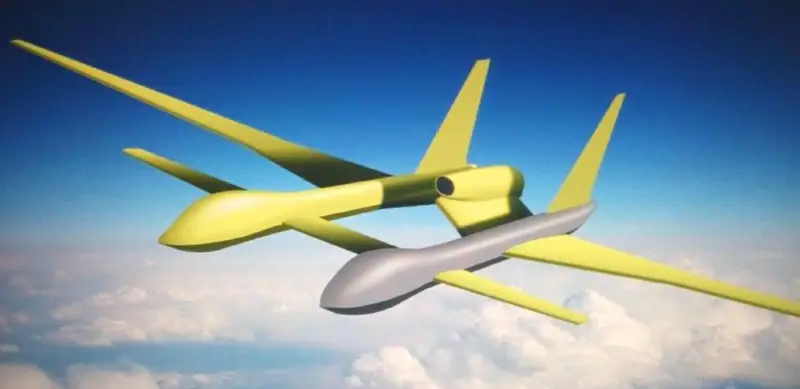
The Divine Eagle UAV has a tandem body with one turbojet engine in the middle and two fins. According to expert estimates, the “Divine Eagle” is equipped with a turbofan engine with a thrust of 3,5 to 5 tons, which is enough to lift an aircraft with a take-off weight of 12-18 tons.
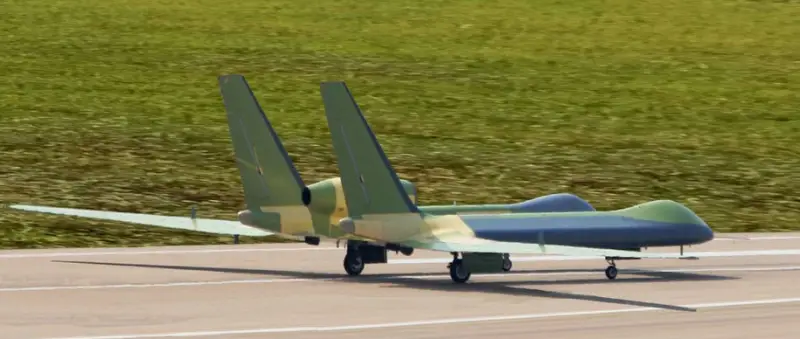
There is no reliable information about the exact dimensions and flight data of the heavy two-keel UAV. But, judging by satellite images, the length of its fuselage can be from 15 to 18 m, and its wingspan can reach 45 m.
Taking into account the size and layout of the Divine Eagle, its practical flight range will be no less than that of the American heavy reconnaissance UAV MQ-4C Triton. The operating patrol altitude can reach 20 km, and the cruising speed is in the range of 750-800 km/h.
Chinese sources say that several AFAR antennas are placed on the external surfaces of the Divine Eagle. Transmission of radar information is carried out in real time via radio relay and satellite communication channels. It is generally accepted that the main purpose of China's largest unmanned vehicle is to track US carrier strike groups, but there is a possibility that the Divine Eagle could also be used for early detection of air targets and missile launches.
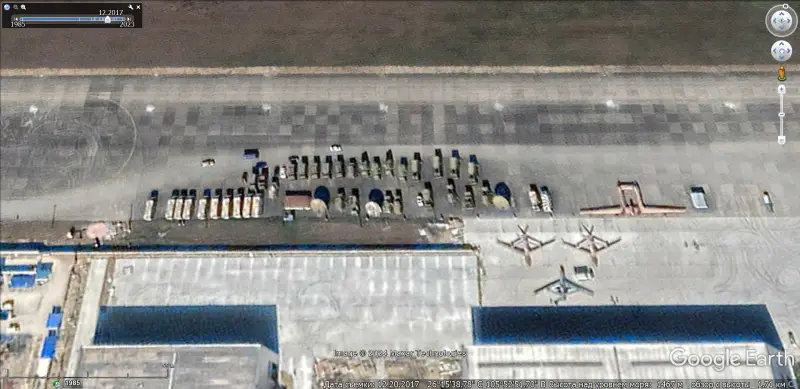
Google Earth satellite image: WZ-7 Soaring Dragon and Divine Eagle UAVs next to ground control stations and satellite communication systems at the Anshun factory airfield
According to unconfirmed information, military testing of the Divine Eagle UAV began in 2017, and now several devices of this type are in trial operation.
Opportunities and prospects for the development of medium and heavy UAVs of the PLA Navy
Currently, Chinese naval aviation has at least seven dozen medium and heavy patrol, reconnaissance and multi-purpose drones. In peacetime, these devices are capable of largely compensating for the shortage of basic patrol and reconnaissance aircraft, and partly performing AWACS missions.
Having tested several types of unmanned aerial vehicles, judging by the occupancy of air bases, Chinese admirals chose two models. The BZK-005 Giant Eagle was chosen as the main multi-purpose mid-class maritime drone for operations in coastal areas, and the turbojet WZ-7 Soaring Dragon should become the main long-range reconnaissance vehicle. Other drones are available in much smaller quantities and are used to a limited extent. Taking into account the fact that the unmanned aerial vehicle industry in China is developing at a very rapid pace, we should expect improvements in UAV models already in service and the emergence of new ones.
However, in wartime, in the event of a collision between the PLA and a technologically strong enemy, the survival of very large and slow UAVs flying at high altitudes is very doubtful, since they are not able to evade fighter attacks and effectively counteract modern long-range anti-aircraft systems. In addition, to ensure stable communications at a significant distance from one’s coast or ships, the use of surface and air repeaters or satellite communication channels is required, which may not be possible in the event of a global conflict with the United States. In any case, the most advanced existing unmanned aerial vehicles are not yet capable of fully replacing manned long-range patrol, anti-submarine and reconnaissance aircraft capable of operating over the vastness of the World Ocean.
Продолжение следует ...
Information